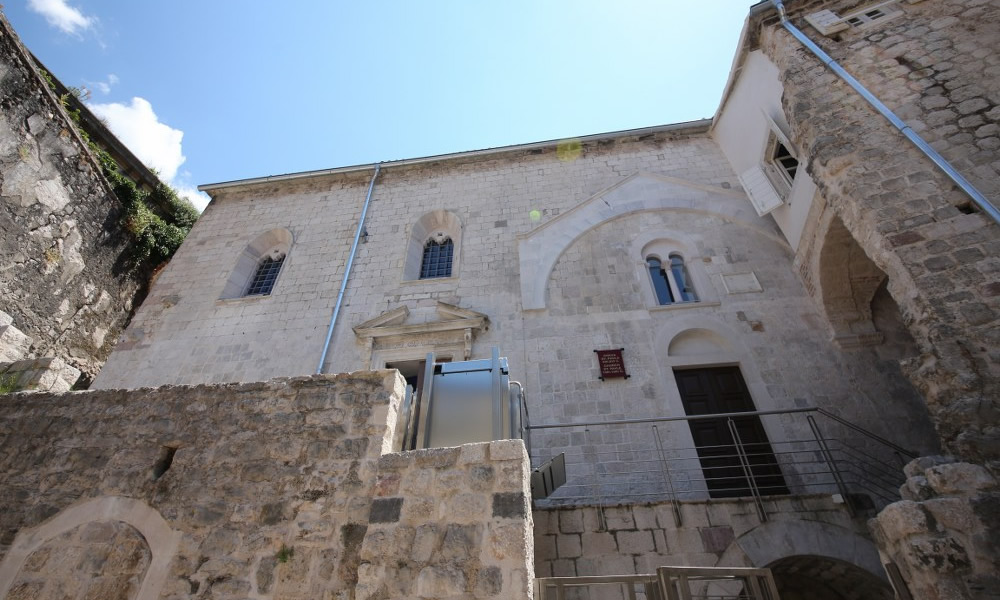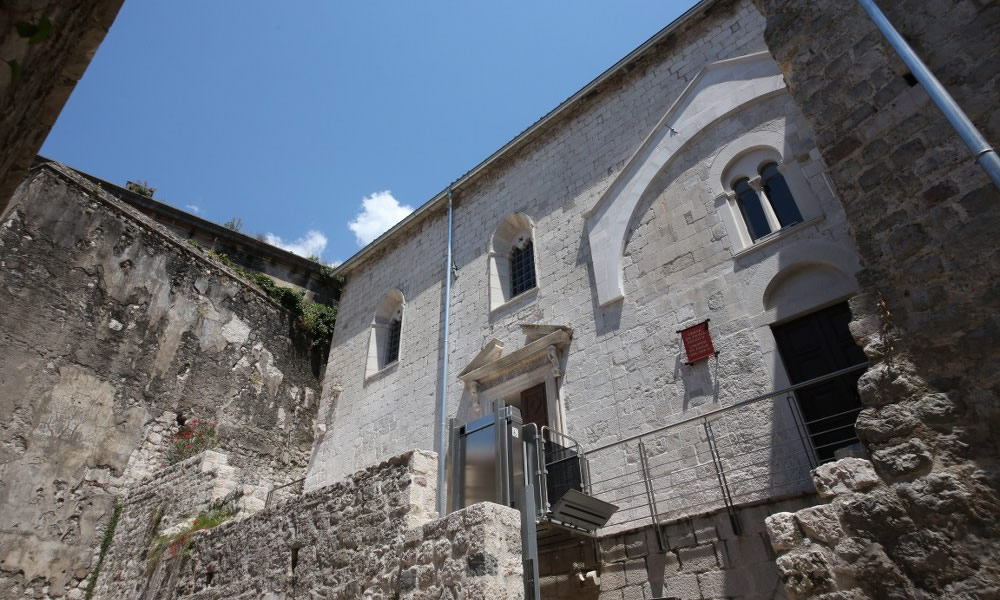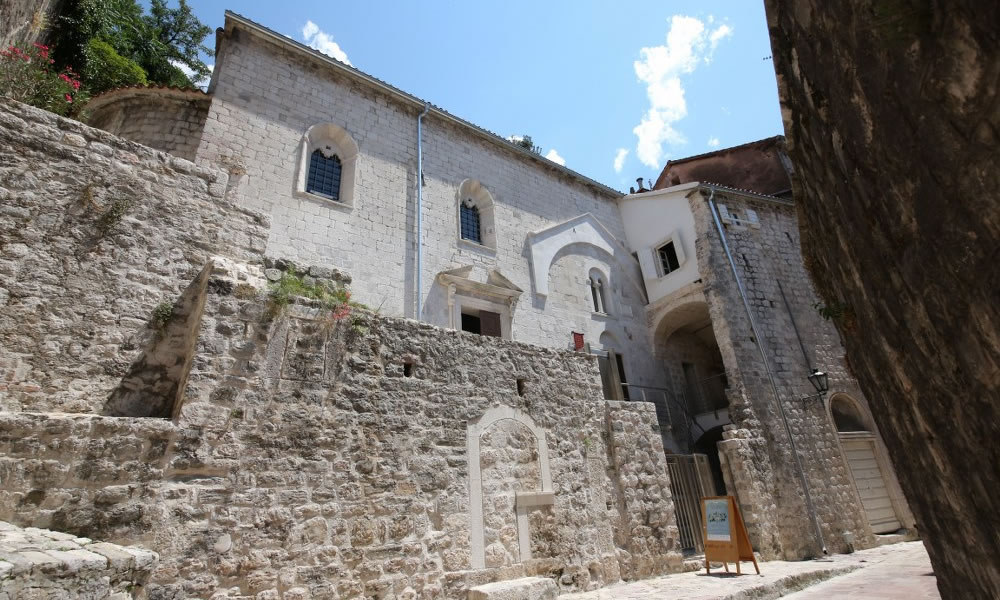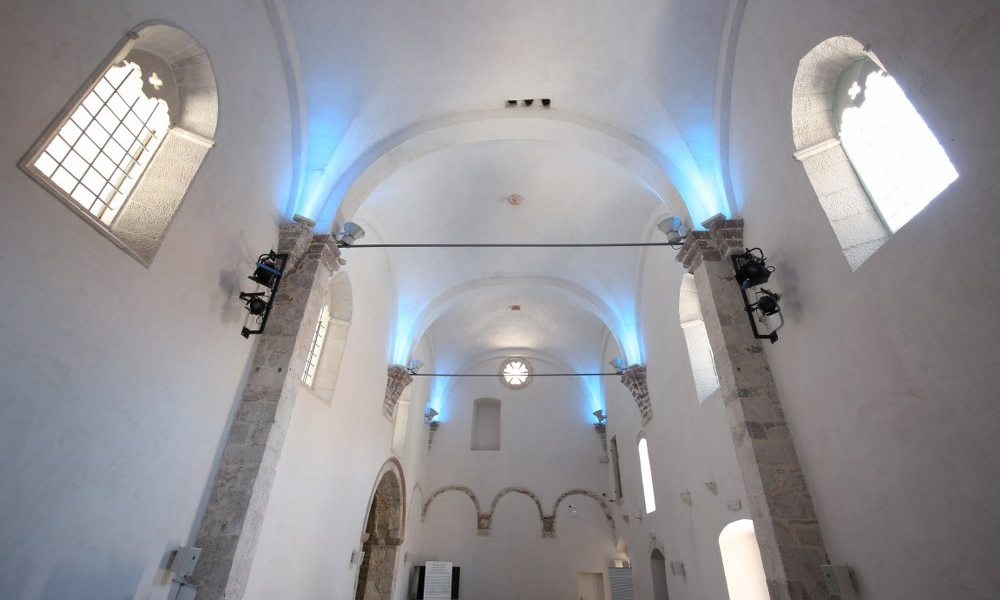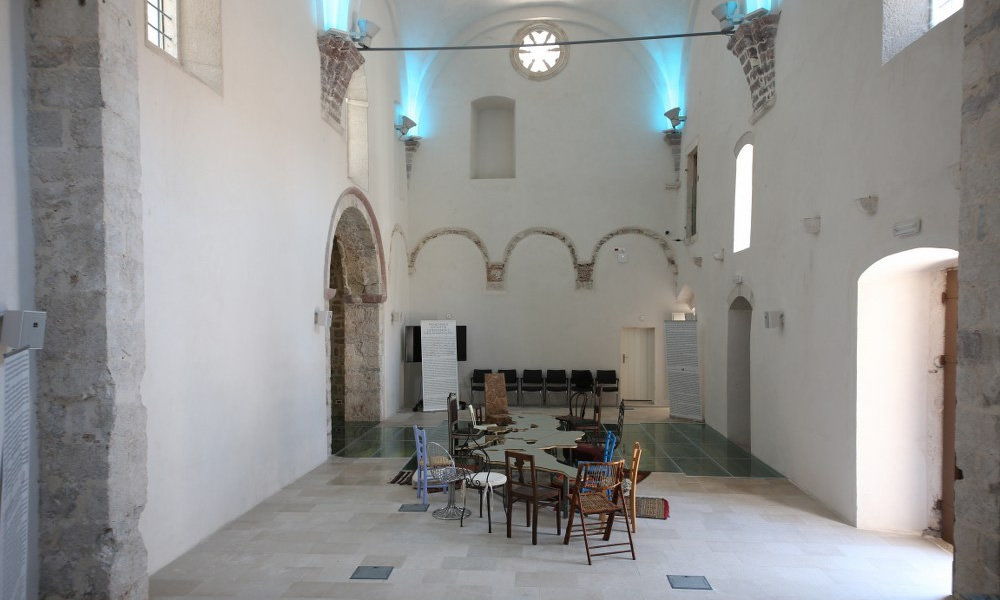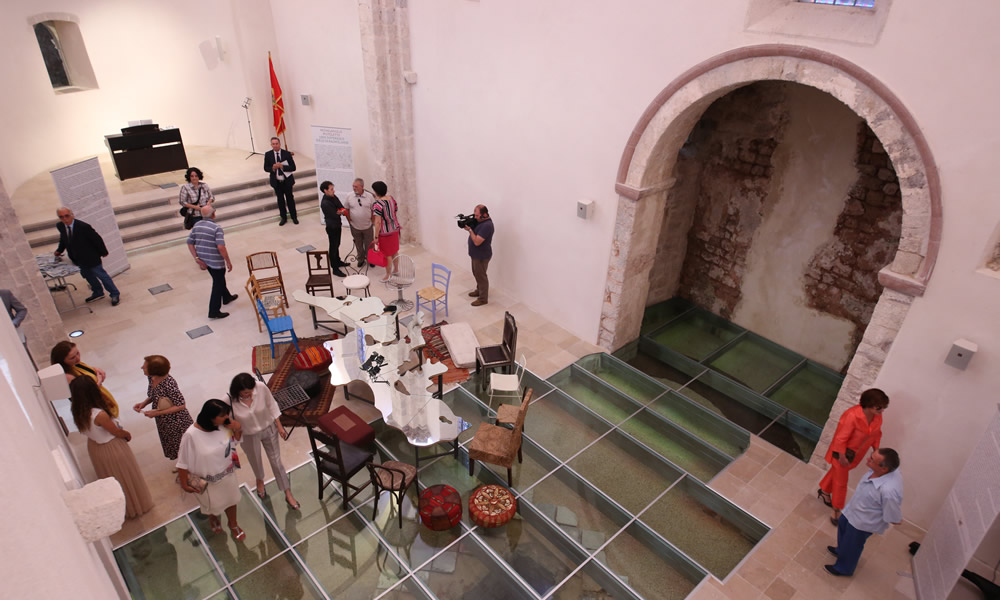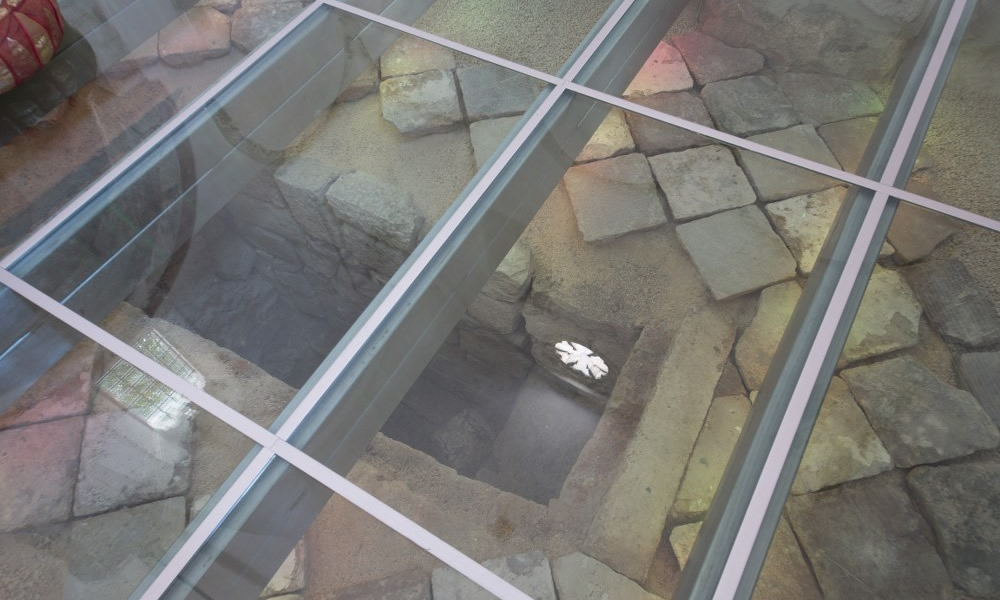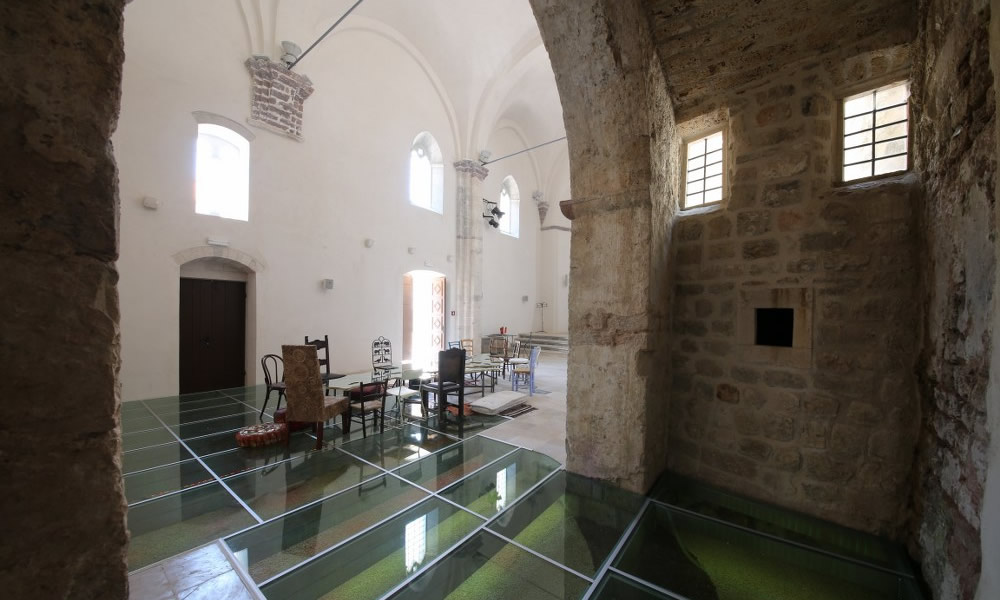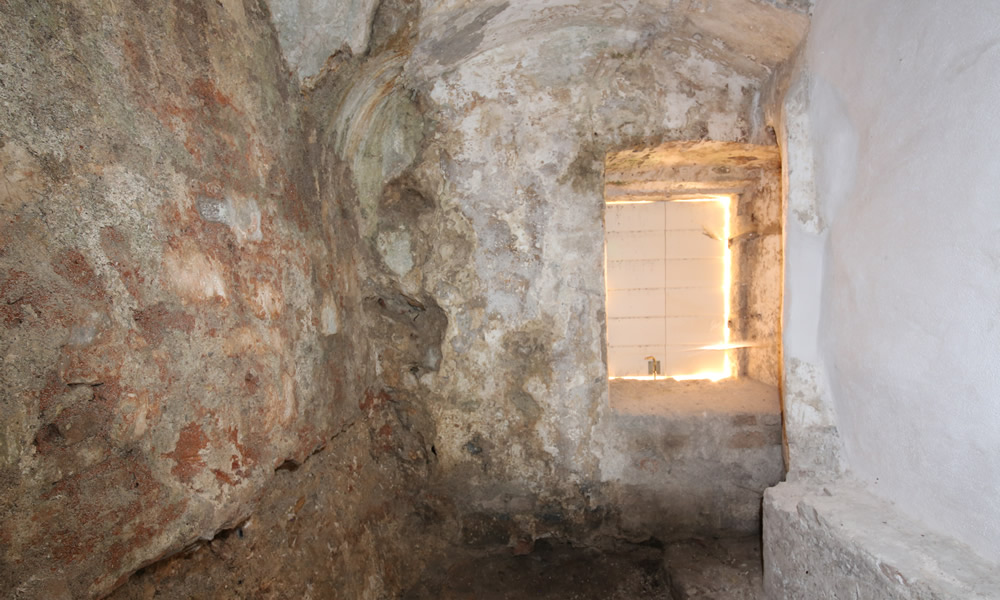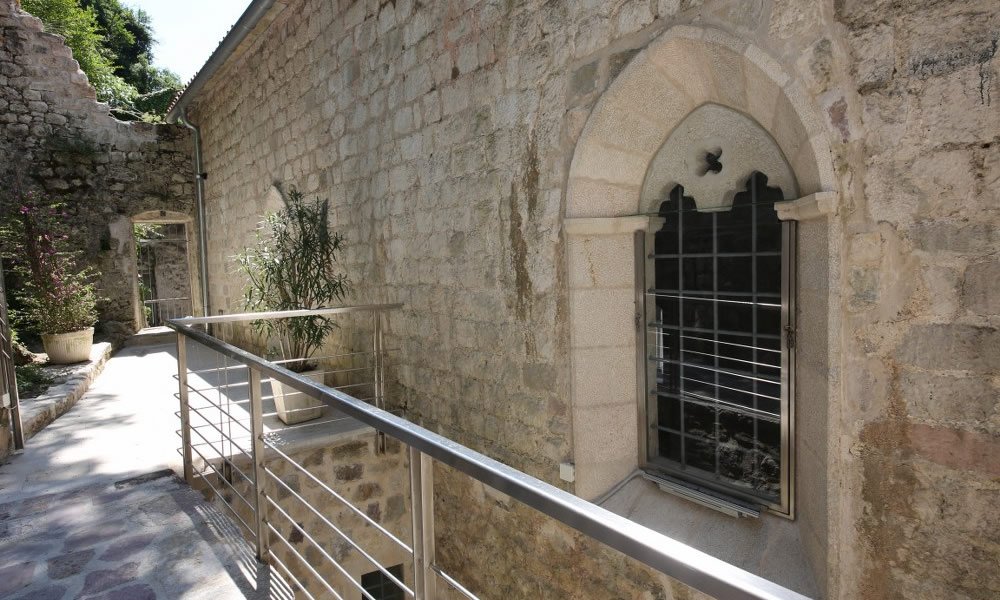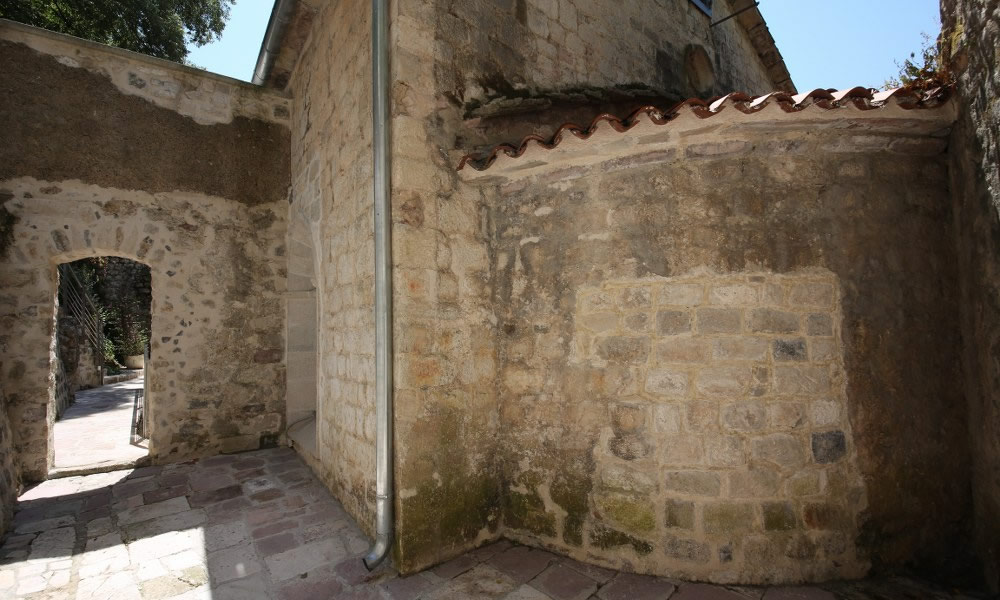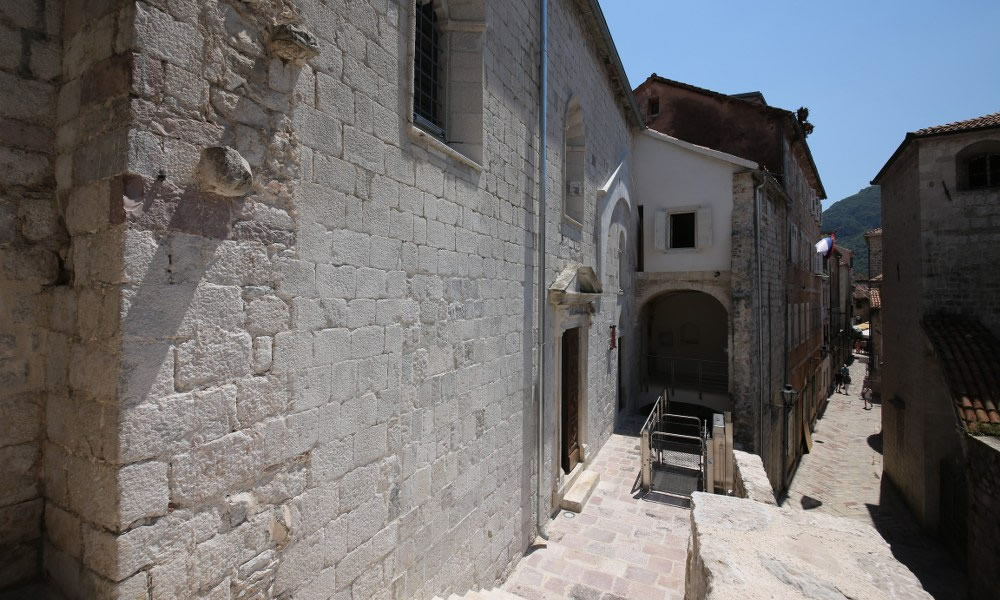At the foot of St. John’s hill, in the street extending from the Northern to the Southern Town gates, formerly the most important artery of Kotor, behind the apse of St. Tryphon’s Cathedral, there lies St. Paul’s Church. The Church used to be completely hidden by a high wall, so that it was only the Romano-Gothic portal that was indicating to the existence of significant architecture behind that seemingly featureless wall.
Pavle Bari, a citizen of Kotor had the St. Paul’s Church built in 1263 as his legacy. This is testified by the inscription mounted on the facade, which mentions the Serbian King Uroš the Great, Pope Urban IV and Kotor Bishop Marko.
Dominican Monastery, male one to start with, and as of the 16th century the female one, was established next to the Church. Blessed Osanna, a Kotor saint, saw the end of her earthly life there in 1565 walled up in her cell. Somewhat earlier on, in July 1539, the infamous Turkish Kapudan-Pasha (Grand Admiral) Hayred’din Barbarossa launched an assault on Kotor. The Turks had stormed the Northern gate, but they encountered fierce cannon fire. At the climax of the battle for Kotor, Osanna, a Dominican nun, left her strict enclosure and climbed onto the northern rampart. Her appearance brought the necessary courage and self-confidence, thus Barbarossa was forced to order retreat and to depart from the Bay. In this way, the tiny Kotor Dominican nun vanquished the infamous pirate and saved her town from the sorrowful fate that had lain in store.
When the Church was turned into barracks during Napoleon’s occupation (1807-1814) its interior was divided in two levels by means of the floor system, so that the original character of a homogenous space completely disappeared. During Italian occupation in the World War II, it was turned into prison, while during the Cominform and the conflict between Tito and Stalin in 1948, this edifice became female prison, so called Little Prison.
During the exploratory works on this church and through careful analysis it was determined that the existing edifice was enlarged in the 16th century, while the only preserved part of the original 13th century church is a section of the former principal western facade with the portal and the inscription on the construction and apsidal arch without the apse in the side walls of the new church. The foundations of the lateral walls of the former church and the remains of the stone floor in the form of a diagonal chessboard were uncovered during the excavations. They are now put on display in the interior of the edifice.
The excavations that were carried out in the narrow courtyard in between the western wall of the Church and the high Street wall uncovered that the 13th century church had been accessed from the lower level of the present-day street via a two-flight stairway. Underneath the stairway there was an arcosolium, within the niche of which there was a built-in sarcophagus, possibly the grave of the founder of the older church.
This invaluable edifice was revitalized and adapted as a single exhibition museum space for the rich collection of stone monuments from the Town Lapidarium, and/or multi-purpose space for exhibitions, concerts, scientific meetings etc.

